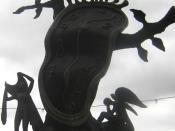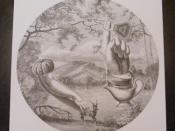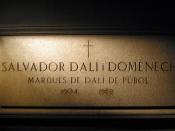Salvadore Darli
Spanish painter. Born into a middle-class family, he studied at the Academy of Fine Arts in Madrid, where he mastered academic techniques. Dalàalso pursued his personal interest in Cubisim and Futurisim and was expelled from the academy for indiscipline in 1923. He formed friendships with Lorca and Buñuel and held his first one-man show in Barcelona (1925), where he exhibited a number of seascapes.In Paris he met Picasso and Breton.
Over the next few years DalÃÂ devoted himself with passionate intensity to developing his method, which he described as 'paranoiac-critical', a 'spontaneous method of irrational knowledge based on the critical and systematic objectivation of delirious associations and interpretations'. It enabled him to demonstrate his personal obsessions and fantasies by uncovering and meticulously fashioning hidden forms within pre-existing ones, either randomly selected (postcards, beach scenes, photographic enlargements) or of an accepted artistic canon. It was at this period that he was producing works like The Lugubrious Game (1929), The Persistence of Memory (1931) and Surrealist Objects, Gauges of Instantaneous Memory (1932).
Flaccid shapes, anamorphoses and double-sided figures combine in these works to create an extraordinary universe where the erotic and the scatological jostle with a fascination for decay - a universe that is reflected in his other works of this period, including his symbolic objects and poems (La Femme visible, 1930; L'Amour et la mémoire, 1931) as well as the screenplay for L'Age d'Or (1930).
It soon became apparent, however, that there was an inherent contradiction in DalÃÂ's approach between what he himself described as 'critical paranoia' - which lent itself to systematic interpretation - and the element of automatism upon which his method depended. Breton soon had misgivings about DalÃÂ's monsters which only lend themselves to a limited, univocal reading. DalÃÂ's extreme statements on political matters,


